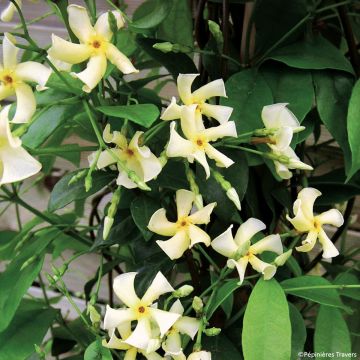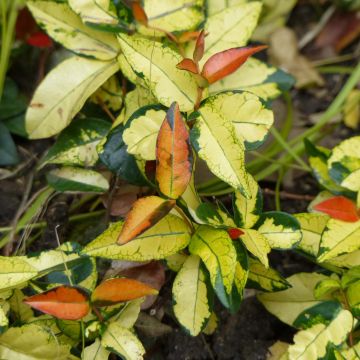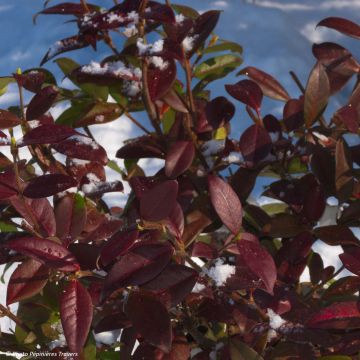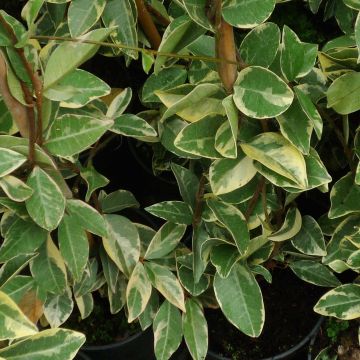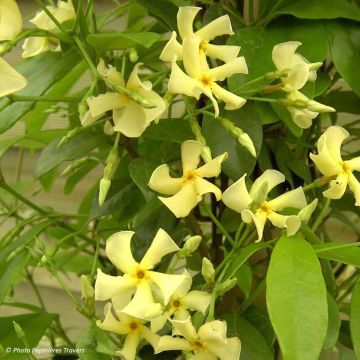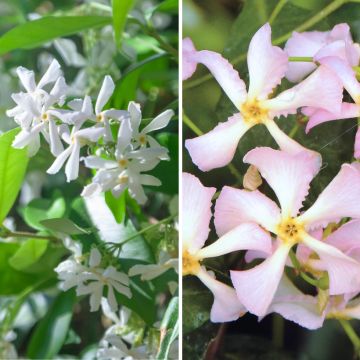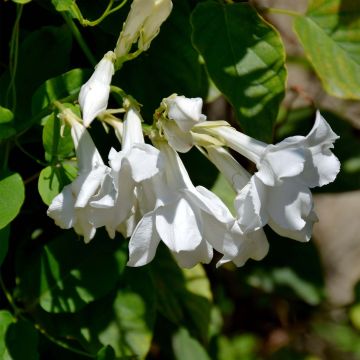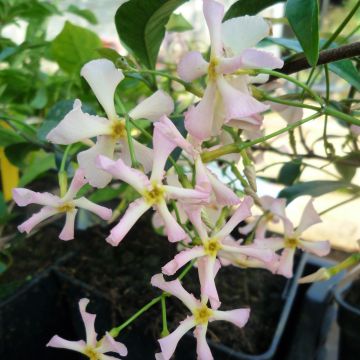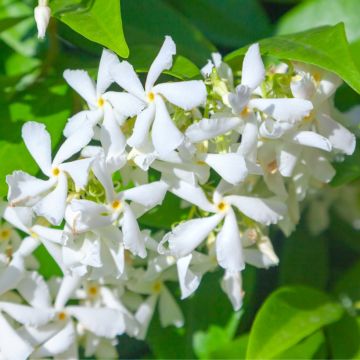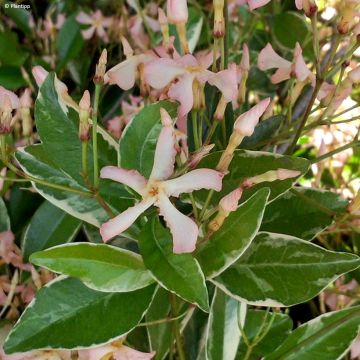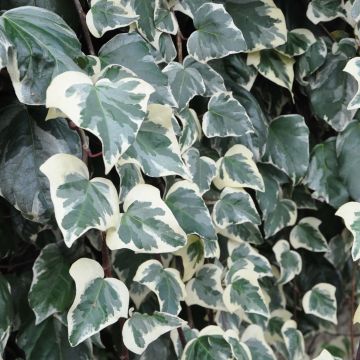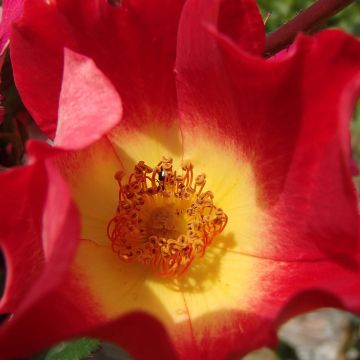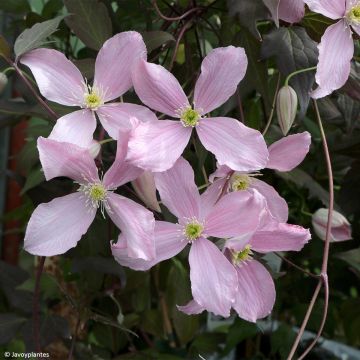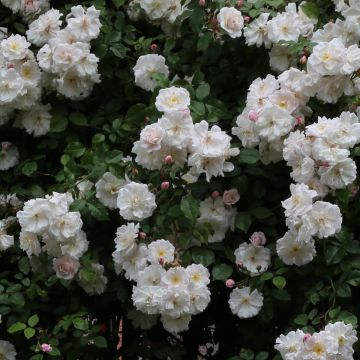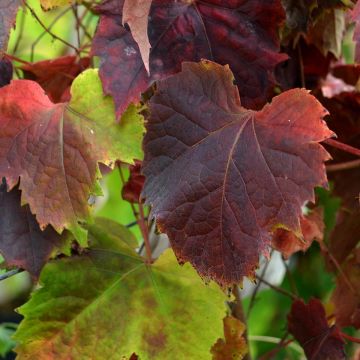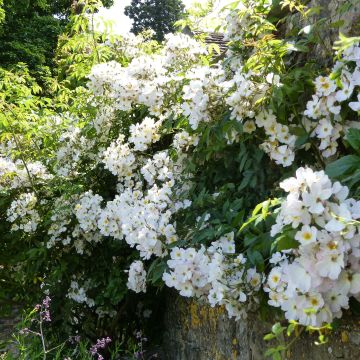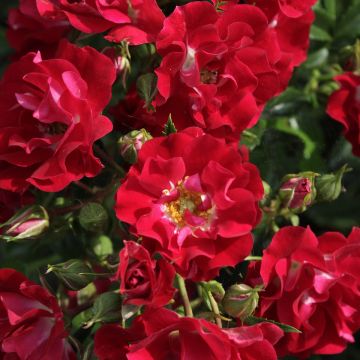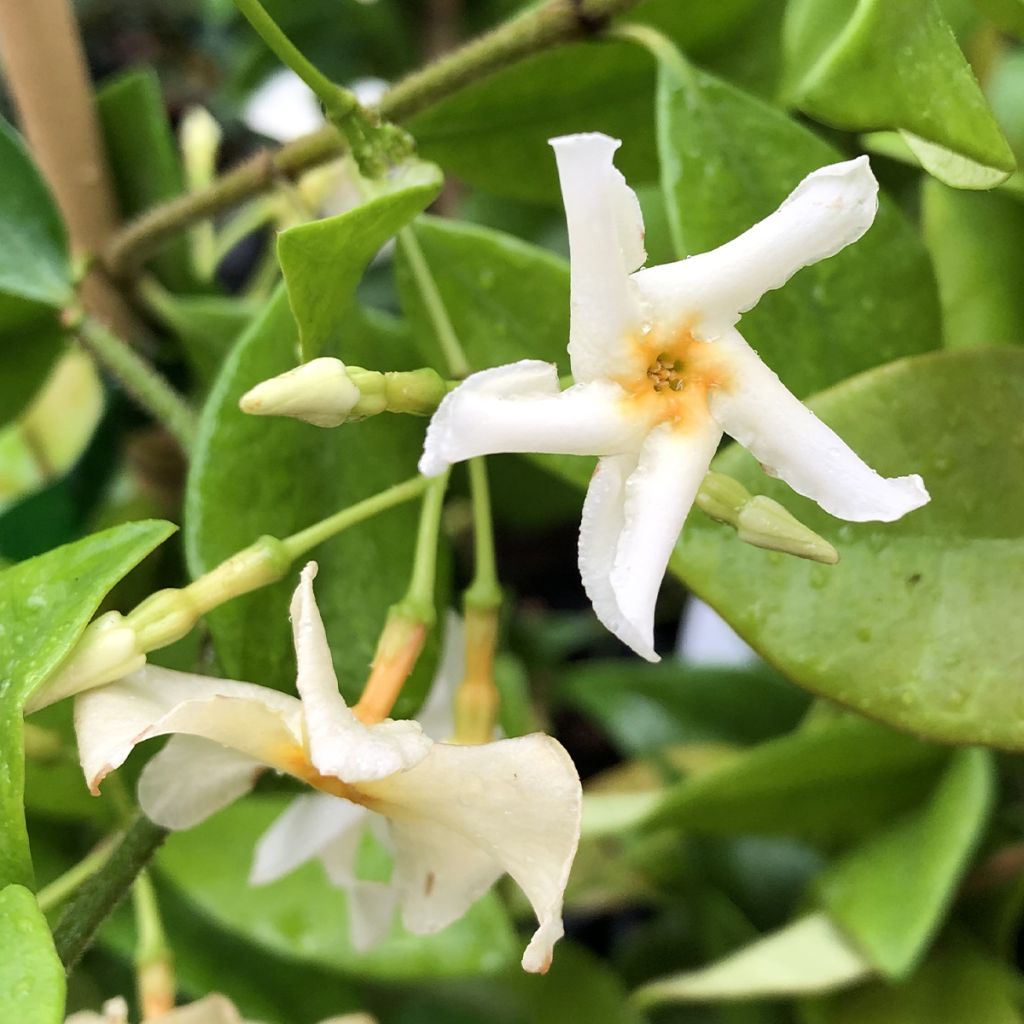

Trachelospermum jasminoides Star of Toscane - Star Jasmine
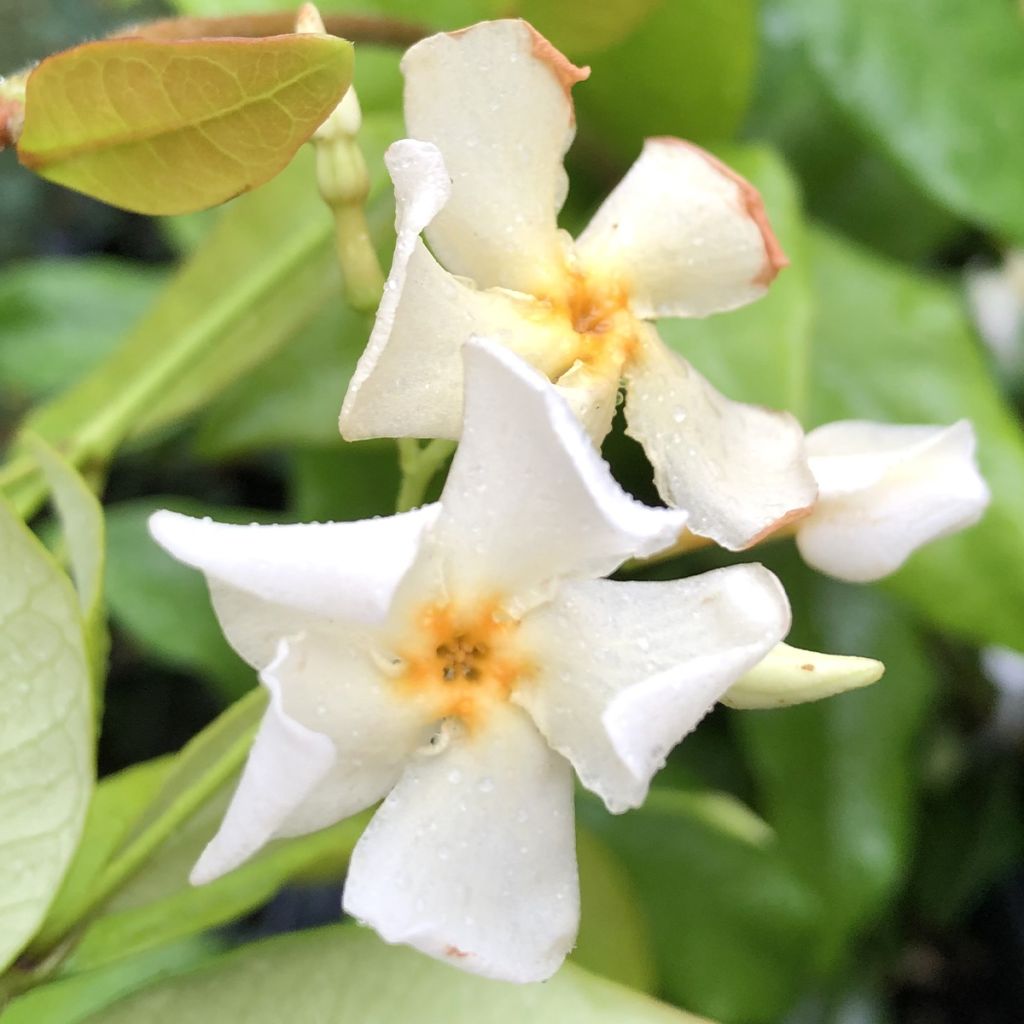

Trachelospermum jasminoides Star of Toscane - Star Jasmine
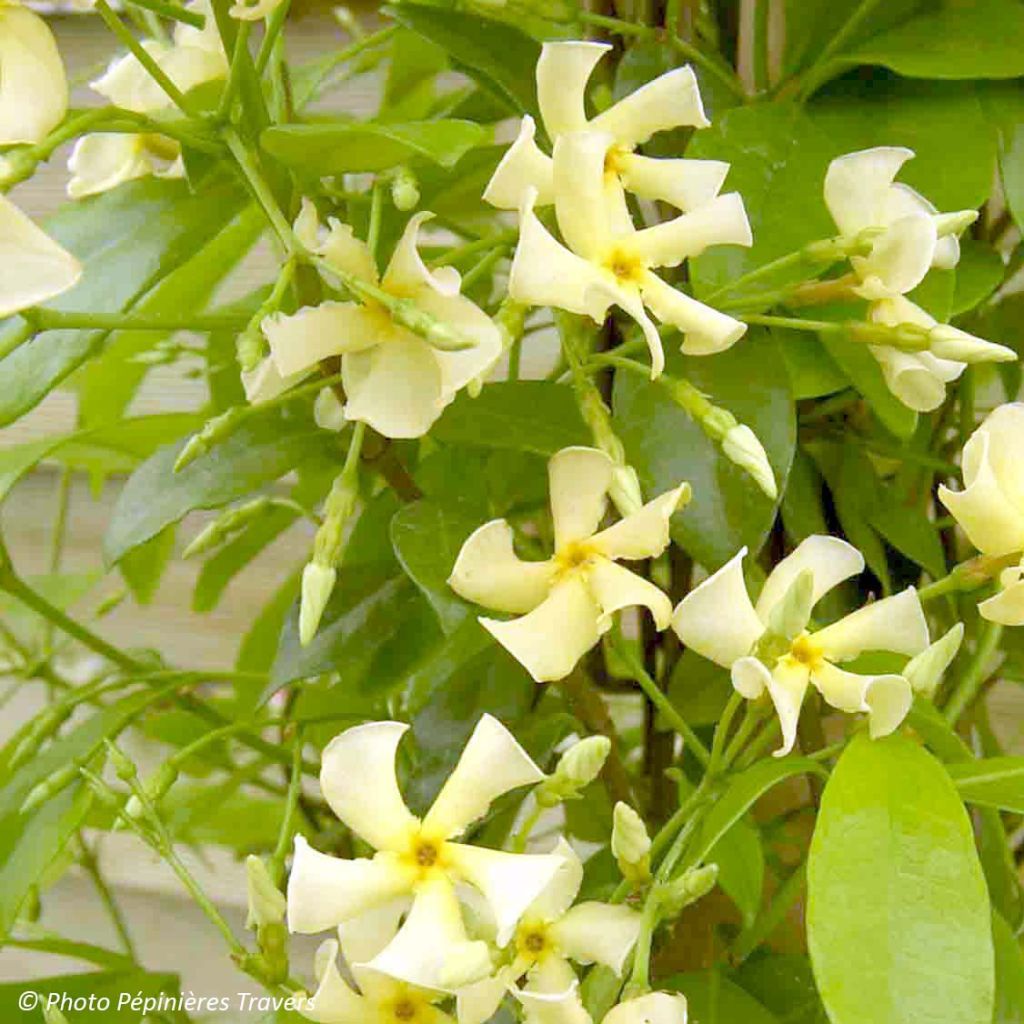

Trachelospermum jasminoides Star of Toscane - Star Jasmine
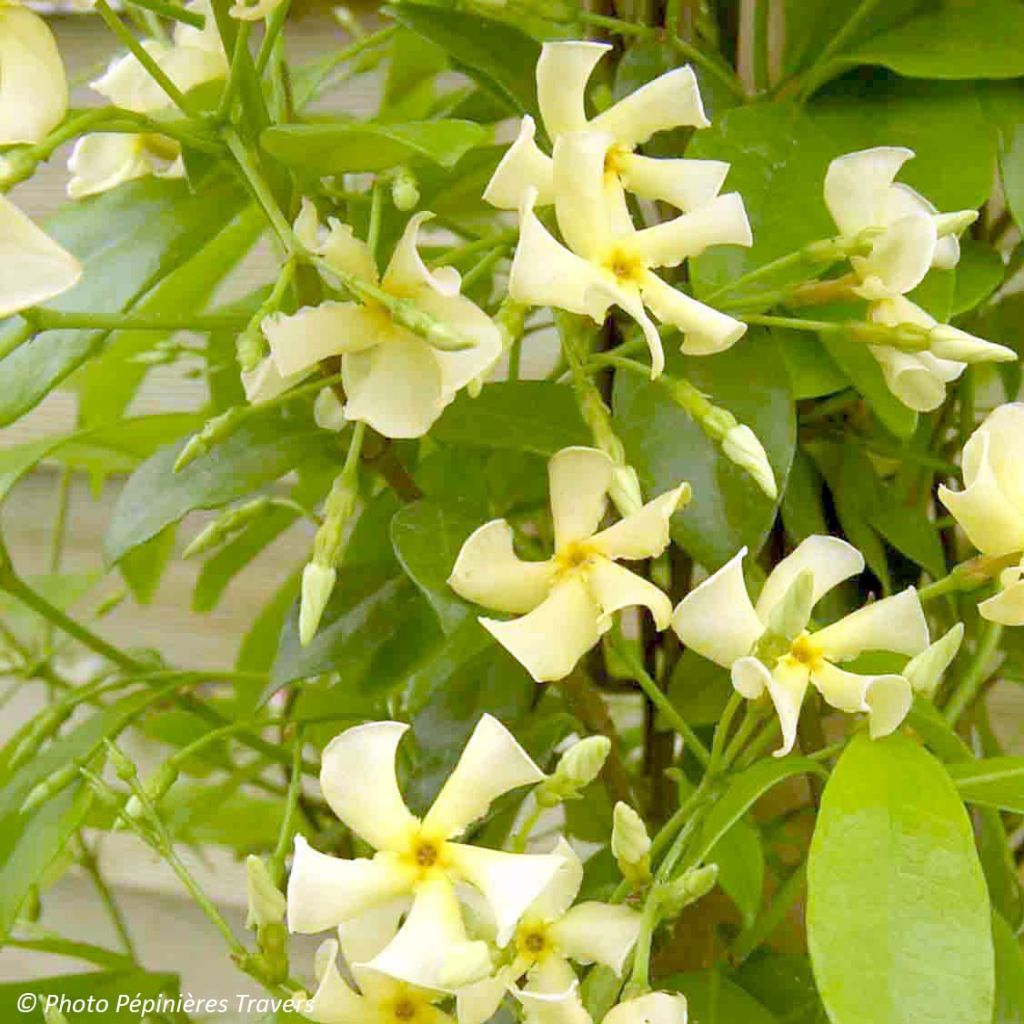

Trachelospermum jasminoides Star of Toscane - Star Jasmine
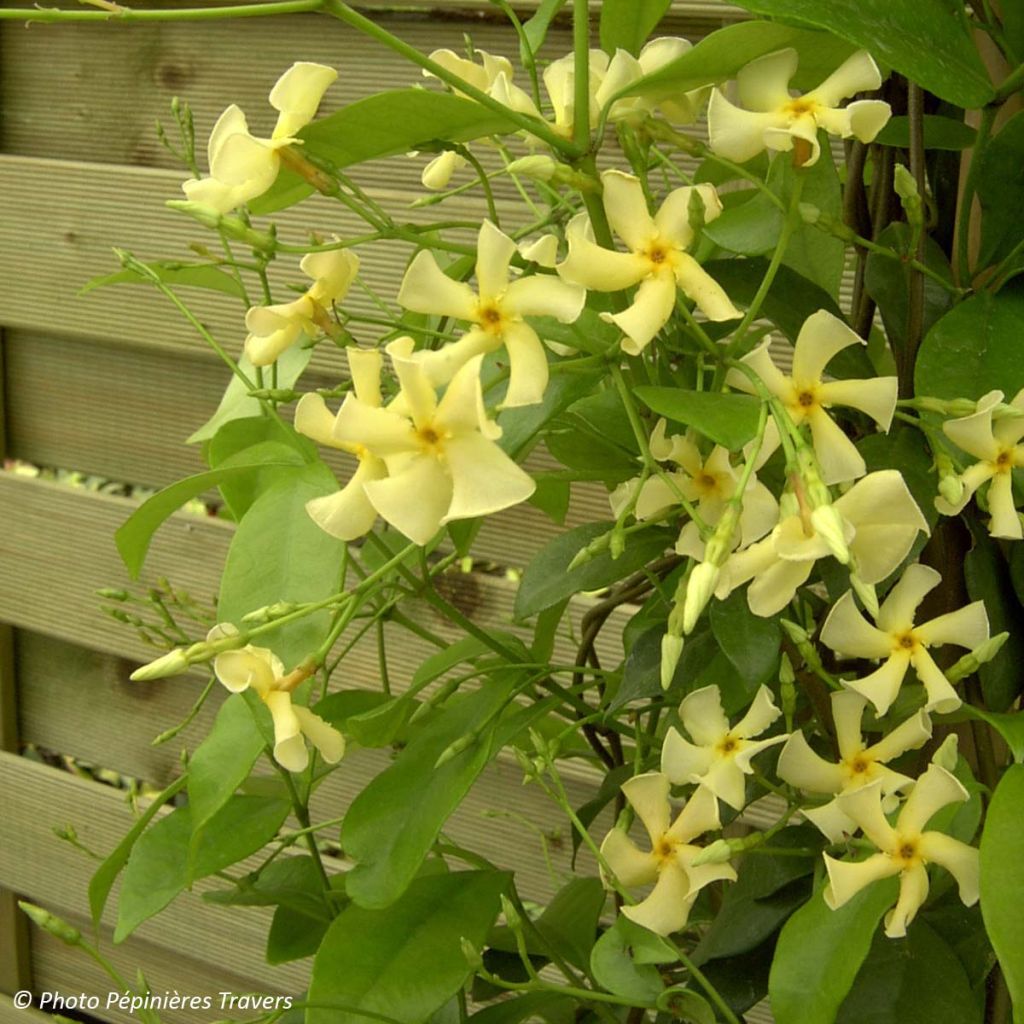

Trachelospermum jasminoides Star of Toscane - Star Jasmine
Trachelospermum jasminoides Star of Toscane - Star Jasmine
Trachelospermum jasminoides Star of Toscane® 'Selbra'
Star Jasmine, Confederate Jasmine, Trader's Compass
This item cannot be shipped to the selected country
Delivery charge from €5.90
More information
Schedule delivery date,
and select date in basket
This plant carries a 6 months recovery warranty
More information
We guarantee the quality of our plants for a full growing cycle, and will replace at our expense any plant that fails to recover under normal climatic and planting conditions.
From €5.90 for pickup delivery and €6.90 for home delivery
Express home delivery from €8.90.
Does this plant fit my garden?
Set up your Plantfit profile →
Description
The Trachelospermum jasminoides 'Star of Tuscany' distinguishes itself from the traditional star jasmine with its cream-white flowers that turn yellow and its fairly compact growth, making it more suitable for small gardens and pot cultivation. Its yellow flowers emit a more subtle fragrance than that of the classic Chinese species, a fragrance capable of perfuming a whole area of the garden on summer evenings. Adorned with glossy evergreen foliage that takes on beautiful reddish hues in cold and shady conditions, this climbing vine-plant also remains attractive all year round. It can be planted in the ground near a fence, used as ground cover, or even placed in a large pot on a terrace or balcony.
Star jasmine, Trachelospermum jasminoides, is a climbing or creeping plant in the apocynaceae family, related to periwinkles, as well as the Allamanda and Mandevilla (the Dipladenia, summer glory of our flowering pots). Its origins are found in China, Japan, Korea, and Vietnam, where it grows on the edge of forests and among thickets.
The 'Star of Tuscany' cultivar was introduced before 2007 in the Netherlands. A bit slow to establish, the plant develops long stems that quickly lignify, its evergreen growth capable of reaching a height of 3m (10ft) and a width of 1.50m (5ft) over time. The branches are adorned with opposite leaves, with entire laminae and ovate-pointed shapes. They are thick and leathery, glossy, and green in color, varying in darkness depending on the nature of the soil. Their length ranges from 5 to 12 cm (2 to 5in), and their width from 2 to 4 cm (1 to 2in). When the plant suffers from cold or intense drought, the leaves take on a beautiful red color, more intense in semi-shade than in the sun, and then they fall. When conditions become more favorable, new leaves appear to replace them. The voluble branches encountering a moist surface emit aerial roots that allow the plant to cling to walls, ground, or stones, similar to ivy.
Another asset of Trachelospermum jasminoides Star of Tuscany is its tender yellow flowering with a golden yellow center, abundant from May to July depending on the climate, often blooming again in September, and especially divinely scented. The flowers are grouped in small clusters at the axils of the leaves and at the tips of the branches. The turbinate bud opens into a small corolla with a short tube that widens and divides into 5 narrow petals arranged in a spiral. The diameter of the flowers reaches 2 to 3 cm (1in). The fruit, rarely observed in our latitudes, resembles a pair of small curved green beans joined at both their base and tip. At maturity, they bear seeds with an egret. Like many plants in the apocynaceae family, false jasmine contains alkaloids that are toxic to humans.
A single plant of this false jasmine Star of Tuscany is capable of perfuming a whole area of the garden, especially in the evening and during warm weather. In most climates, except for the coldest ones, it can be planted in the ground, preferably well-drained and humus-rich, in sunny or semi-shady locations. With fairly slow growth, tolerating summer drought once well-established, this Trachelospermum is most often used as a climbing plant to cover a fence or small structure, but it can also form a magnificent ground cover, as an alternative to ivy. It can be grown in pots in colder regions to be able to protect it during winter. It can then be easily stored in an unheated conservatory to enjoy its beautiful winter foliage. Balconies and terraces can also accommodate its prodigious flowering by placing the plant in a large container.
Report an error about the product description
Trachelospermum jasminoides Star of Toscane - Star Jasmine in pictures
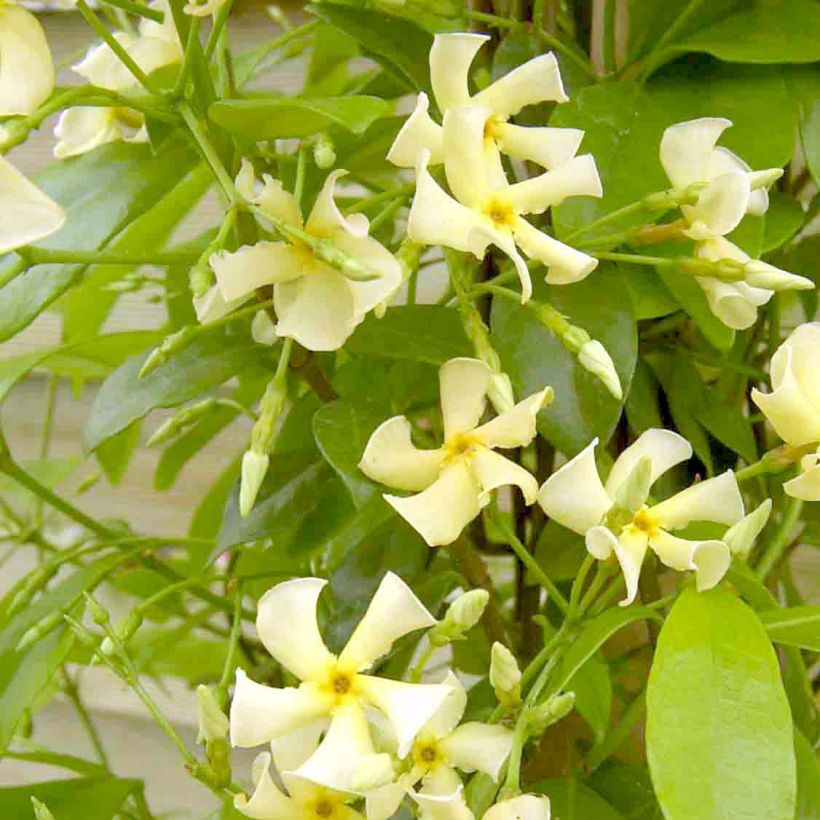

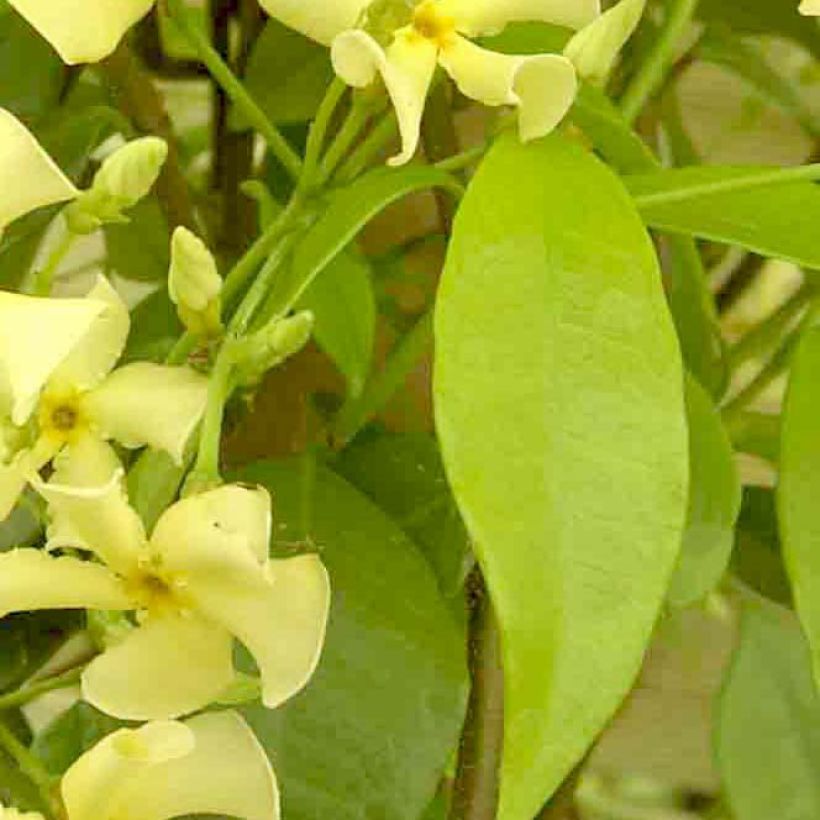

Plant habit
Flowering
Foliage
Botanical data
Trachelospermum
jasminoides
Star of Toscane® 'Selbra'
Apocynaceae
Star Jasmine, Confederate Jasmine, Trader's Compass
Cultivar or hybrid
Other Star Jasmine - Trachelospermum
Planting and care
Plant the Trachelospermum jasminoides Star of Toscane in spring north of the Loire, in September-October in the south. Choose a sunny or partially shaded exposure, or even in shade where it will be slightly less floriferous. Install it in a deep, loose and healthy soil, well-drained, sheltered from cold winds. It can tolerate -10°C (14°F), occasionally even -15°C (5°F), but will better withstand very strong frosts if the foliage is protected with a winter cover and the soil is rather dry.
This plant tolerates limestone well, provided there is no excessive moisture in winter. In heavy and suffocating soil, it may show symptoms of chlorosis (leaves gradually turning yellow from the periphery, with the veins remaining green). Water during summer or in case of drought during the first two years to help the plant establish. Once the roots have penetrated deeply into the soil, it will manage on its own, even in very dry summers. During growth, water once or twice a week and optionally apply liquid fertilizer twice a month. In autumn, a slow-release organic fertilizer can be applied and lightly buried by scratching at the base of the plant, starting from the second year.
You can prune it in late winter to control its growth, or after each flowering.
Planting period
Intended location
Care
-
, onOrder confirmed
Reply from on Promesse de fleurs
Foolproof climbers
Haven't found what you were looking for?
Hardiness is the lowest winter temperature a plant can endure without suffering serious damage or even dying. However, hardiness is affected by location (a sheltered area, such as a patio), protection (winter cover) and soil type (hardiness is improved by well-drained soil).

Photo Sharing Terms & Conditions
In order to encourage gardeners to interact and share their experiences, Promesse de fleurs offers various media enabling content to be uploaded onto its Site - in particular via the ‘Photo sharing’ module.
The User agrees to refrain from:
- Posting any content that is illegal, prejudicial, insulting, racist, inciteful to hatred, revisionist, contrary to public decency, that infringes on privacy or on the privacy rights of third parties, in particular the publicity rights of persons and goods, intellectual property rights, or the right to privacy.
- Submitting content on behalf of a third party;
- Impersonate the identity of a third party and/or publish any personal information about a third party;
In general, the User undertakes to refrain from any unethical behaviour.
All Content (in particular text, comments, files, images, photos, videos, creative works, etc.), which may be subject to property or intellectual property rights, image or other private rights, shall remain the property of the User, subject to the limited rights granted by the terms of the licence granted by Promesse de fleurs as stated below. Users are at liberty to publish or not to publish such Content on the Site, notably via the ‘Photo Sharing’ facility, and accept that this Content shall be made public and freely accessible, notably on the Internet.
Users further acknowledge, undertake to have ,and guarantee that they hold all necessary rights and permissions to publish such material on the Site, in particular with regard to the legislation in force pertaining to any privacy, property, intellectual property, image, or contractual rights, or rights of any other nature. By publishing such Content on the Site, Users acknowledge accepting full liability as publishers of the Content within the meaning of the law, and grant Promesse de fleurs, free of charge, an inclusive, worldwide licence for the said Content for the entire duration of its publication, including all reproduction, representation, up/downloading, displaying, performing, transmission, and storage rights.
Users also grant permission for their name to be linked to the Content and accept that this link may not always be made available.
By engaging in posting material, Users consent to their Content becoming automatically accessible on the Internet, in particular on other sites and/or blogs and/or web pages of the Promesse de fleurs site, including in particular social pages and the Promesse de fleurs catalogue.
Users may secure the removal of entrusted content free of charge by issuing a simple request via our contact form.
The flowering period indicated on our website applies to countries and regions located in USDA zone 8 (France, the United Kingdom, Ireland, the Netherlands, etc.)
It will vary according to where you live:
- In zones 9 to 10 (Italy, Spain, Greece, etc.), flowering will occur about 2 to 4 weeks earlier.
- In zones 6 to 7 (Germany, Poland, Slovenia, and lower mountainous regions), flowering will be delayed by 2 to 3 weeks.
- In zone 5 (Central Europe, Scandinavia), blooming will be delayed by 3 to 5 weeks.
In temperate climates, pruning of spring-flowering shrubs (forsythia, spireas, etc.) should be done just after flowering.
Pruning of summer-flowering shrubs (Indian Lilac, Perovskia, etc.) can be done in winter or spring.
In cold regions as well as with frost-sensitive plants, avoid pruning too early when severe frosts may still occur.
The planting period indicated on our website applies to countries and regions located in USDA zone 8 (France, United Kingdom, Ireland, Netherlands).
It will vary according to where you live:
- In Mediterranean zones (Marseille, Madrid, Milan, etc.), autumn and winter are the best planting periods.
- In continental zones (Strasbourg, Munich, Vienna, etc.), delay planting by 2 to 3 weeks in spring and bring it forward by 2 to 4 weeks in autumn.
- In mountainous regions (the Alps, Pyrenees, Carpathians, etc.), it is best to plant in late spring (May-June) or late summer (August-September).
The harvesting period indicated on our website applies to countries and regions in USDA zone 8 (France, England, Ireland, the Netherlands).
In colder areas (Scandinavia, Poland, Austria...) fruit and vegetable harvests are likely to be delayed by 3-4 weeks.
In warmer areas (Italy, Spain, Greece, etc.), harvesting will probably take place earlier, depending on weather conditions.
The sowing periods indicated on our website apply to countries and regions within USDA Zone 8 (France, UK, Ireland, Netherlands).
In colder areas (Scandinavia, Poland, Austria...), delay any outdoor sowing by 3-4 weeks, or sow under glass.
In warmer climes (Italy, Spain, Greece, etc.), bring outdoor sowing forward by a few weeks.

































